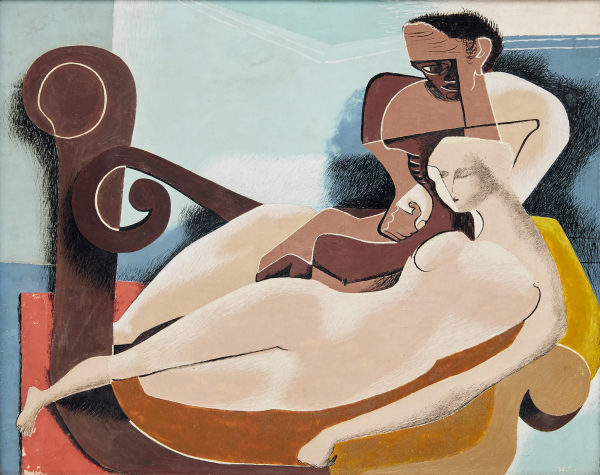Blair Hughes Stanton (1902–1981) was one of the most technically accomplished British artists, celebrated for his exceptional skills in the art of engraving. Born in London, Stanton was the son of renowned artist Sir Herbert Hughes-Stanton. From an early age, his talent and passion for art were evident, leading him on a remarkable journey in the world of British art.
Stanton's affinity for engraving blossomed during his association with the Society of Wood Engravers, although his beliefs were more aligned with the philosophy of the English Wood Engraving Society, which he co-founded in 1925. The upcoming modern & Contemporary British & Irish Art sale at Rosebery's is proud to feature several remarkable works by Blair Hughes Stanton. The auction will take place on the 13th of October at 10 am, providing art enthusiasts with an opportunity to appreciate the legacy of this iconic artist.
Blair Hughes Stanton's reputation as a prominent figure in British art was established during the interwar era, where he played a vital role in the revival of wood engraving within the realm of Modern art. His unique visual language, characterized by an exquisite celebration of love and physicality, resonated deeply with audiences and fellow artists alike. Stanton's artistic journey began at the prestigious Byam Shaw School of Art, where he redirected his path from the Royal Navy to pursue his true passion, guided by the teachings of the influential artist Leon Underwood.
Underwood, a dominant influence throughout Stanton's career, entrusted him with the responsibility of overseeing the Brook Green School whenever he traveled to America. During his time at the Brook Green School, Stanton encountered Marion Mitchell, an American wood engraver who introduced him to the captivating world of wood engraving. This encounter would shape the direction of his artistic career and become the hallmark of his artistic expression.
In 1925, Stanton met Gertrude Hermes, a fellow student at Brook Green School, and their love blossomed. They married in 1926 and embarked on a creative journey together. In 1930, both Stanton and Hermes were appointed to positions within Gregynog Press, where Stanton's talent as a sought-after book illustrator flourished. His wood engravings graced the pages of notable publications, including works by his close friend D.H. Lawrence and T.E. Lawrence's "Seven Pillars of Wisdom."
However, Stanton's personal life took a complex turn as he engaged in an affair with Ida Affleck Graves in 1930, leading to his separation from Hermes in 1932. Undeterred by the challenges he faced, Stanton, along with Graves, founded Gemini Press in Colchester in 1933. This venture aimed to unleash their creative freedom from external constraints. Their collaboration resulted in the production of "Epithalamion" in 1934, a remarkable book featuring 23 full-page wood engravings by Stanton. Although unable to marry due to Graves' previous marriage, the book served as a profound celebration of their spiritual and physical union.
Stanton's artistic prowess gained international recognition when he won the prestigious International Prize for Engraving at the Venice Biennale in 1938. However, his relationship with Graves eventually reached its end in 1939, marking a turning point in his life and career.
As the Second World War erupted, Stanton, like many artists of his time, contributed to camouflage work for the British Army. In 1940, he enlisted with the British Army and served in the Royal Engineers in the Middle East and Greece. Unfortunately, he was captured and became a prisoner of war, enduring immense hardships. During his time in captivity, he suffered two
